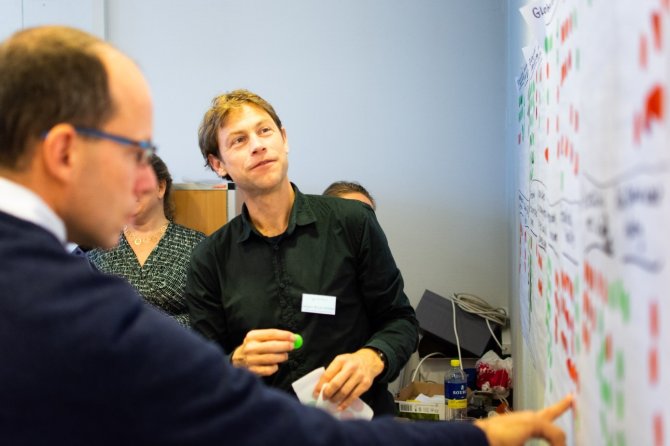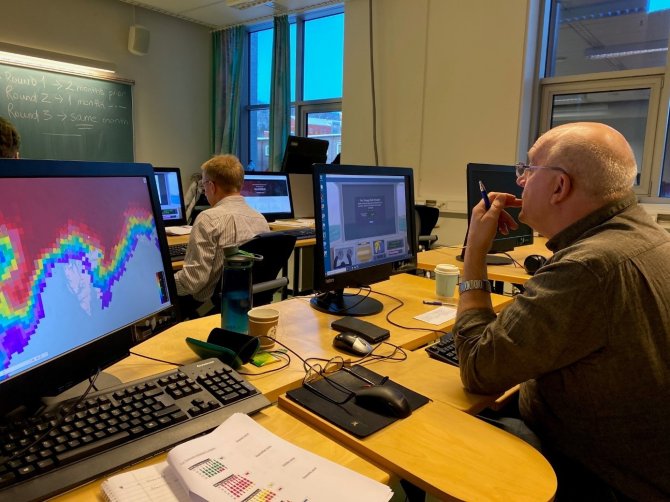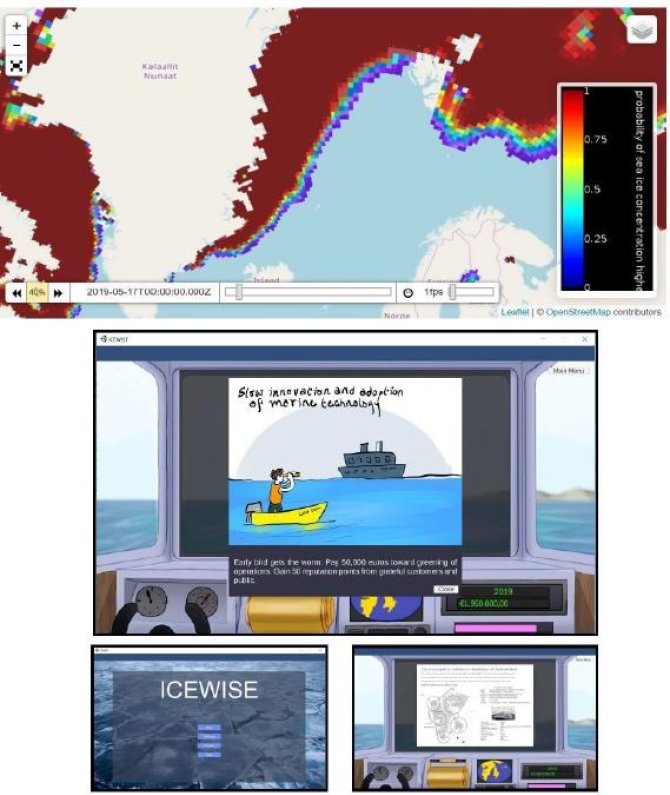
News
Ice matters! Co-producing sea-ice predictions to increase sectoral and societal resilience in the Arctic region
If the Arctic ice cap is in decline, why is mapping sea ice more important than ever? What tools are available to increase the societal values generated by improved projections about climate, weather, and sea ice? Read about these insights and the portfolio of products created by the SALIENSEAS project.
The Journey of SALIENSEAS
The SALIENSEAS (Enhancing the Saliency of climate services for marine mobility Sectors in European Arctic Seas) project began its 3.5 year journey in the fall of 2017. ENP’s Machiel Lamers and Berill Blair have worked with partners at the Danish and Norwegian Meteorological Institutes, Umeå University, UiT and numerous Arctic representatives and organizations[1] to facilitate the successful transdisciplinary development of sea-ice decision tools.
Sea-ice is a social-ecological system that encompasses multi-jurisdictional geophysical-social-ecological features and interactions
The impetus for the project stemmed from an increasingly dynamic ice pack in the Arctic Ocean that poses adaptation challenges for local communities and marine sectors who already operate in an extreme decision-environment. These challenges have increased the need for salient forecasts.

The SALIENSEAS project adopted the view that sea-ice is a social-ecological system that encompasses multi-jurisdictional geophysical-social-ecological features and interactions. In turn, the project shed light on complex interrelations among a nexus of domains: natural phenomena (sea-ice variation), relevant forecast technologies (assessment of seasonal sea-ice risk) and human factors (changing marine traffic patterns, decision uncertainties). Visit the SALIENSEAS website (below) to learn more.
Co-production at work
In the course of the project, SALIENSEAS has co-produced with users a subseasonal-to-seasonal forecast of sea ice probabilities for the Arctic region, and an iceberg atlas and fast-ice climatology for Greenlandic waters. These outcomes were facilitated by ENP researchers Blair and Lamers who developed a customized coproduction framework that incorporated foresight methods to facilitate anticipatory learning and futures literacy, and simulation-gaming to facilitate experimentation, replication and context-based learning.
The special issue “Societal Value of Improved Forecasting” co-edited by M. Lamers provides insights on the use and potential improvement of weather, water, ice and climate services for polar regions, and translating these scientific and technological advances into social benefits.

